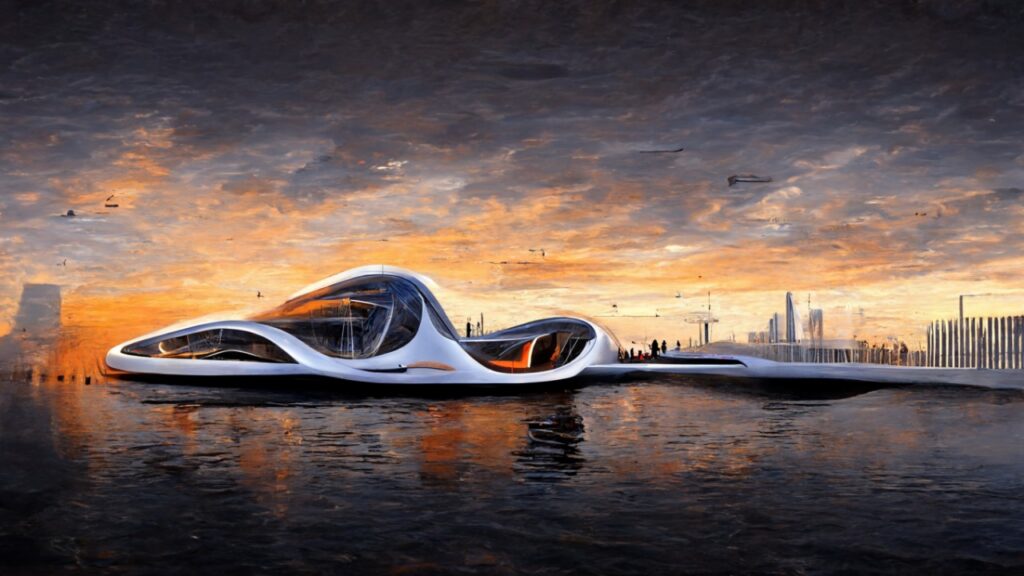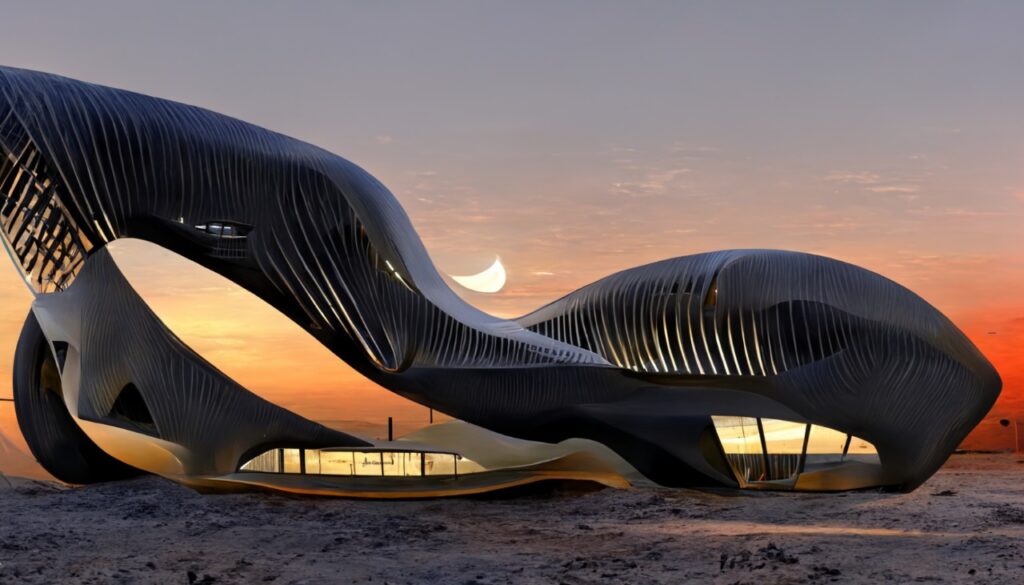3D PRINTING
3D printing is an additive manufacturing process using a computer-controlled production technique that builds a product from the ground up layer by layer. There are several 3D printing technologies available which include extrusion of molten material; direct energy deposition – the melting of the material with a high energy power source; the solidification of powder, which involves the fusion or joining of particles; sheet lamination, the bonding of sheets of material; and photopolymerization, the solidification of a liquid polymer.
All kinds of materials can be used for manufacturing with 3D printing techniques; metals, sand, ceramics, food, living cells and plastics.
Stemming from the Stereolithography (SLA) process, first achieved in the 1980’s, using high-powered laser to turn liquid resin into a solid material the technique was introduced at building scale in the construction industry in 2004 to 3D print a wall, though it was not until two decades later that the first 3D printed full building was realised by DUS Architecture with their 700m2 Canal House in Amsterdam. This was built from bioplastics which is more than 50% bio-based and comes from linseed oil.
Image source: DUS Architecture
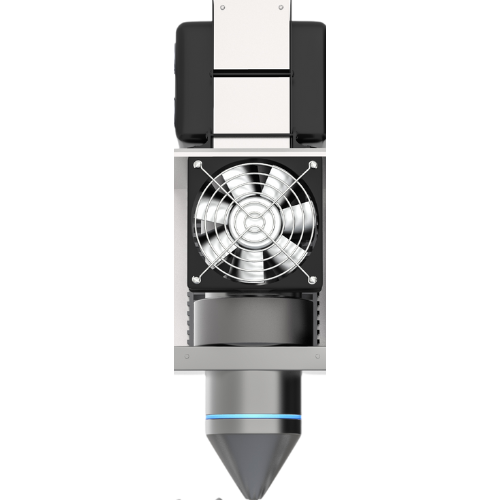
Here, the machine heats the bioplastics to create streams of molten polymers which are layered on top of each other to create the desired shape. The machine can construct building elements up to 5m tall. All components including the staircases, columns and walls are 3D printed and these large segments are slotted together to create the final structure.
3D printing is cited to be part of the fourth industrial revolution which will transform the construction sector. Most 3D printed construction projects use concrete, but this is expected to move towards bioplastics in the future. The advantages of using bioplastics instead of concrete include:
- It uses less energy;
- It has a lower carbon footprint;
- it’s easier and cheaper to import and move around;
- bioplastic can be shredded and reused if a mistake is made or at the end of the building or component lifespan, thus omitting waste and supporting the circular economy
It is envisaged that 3D printing can also be used for large construction and infrastructure projects, such as bridges where steel joints will be replaced by bioplastics joints.
In 2018, NASA approved plans from the US Research Studio to build a 3D printed house made from bioplastics on the planet Mars as part of NASA’s 3D printed Habitat Challenge.
The house will be 3D printed using a static construction rover and materials from the surface of Mars including bioplastics and basalt. The house has 4 levels: a wet lab on the lower level, a kitchen and dry lab above, and the top floors reserved for recreation.
The bedrooms will be semi enclosed sleeping pods. Light will come in from water-filled skylight caps above.
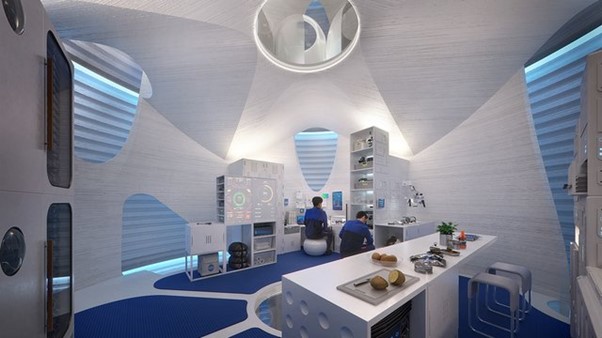
WASP, a3D Printing studio based out of Italy, recently produced a full-scale residential prototype out of soil, rice products, and hydraulic lime. Measuring approximately 320-square-feet in plan, the project was completed in 10 days and was built in the town of Massa Lombarda in the region of Emilia-Romagna.
The project, named Gaia House, aims to establish a template for mass-produced biodegradable and structurally efficient structures. The building rises from a circular concrete foundation, relying on a team-developed computational design to reduce the total quantity of materials while imprinting geometric variation across the facade.
For the fabrication of the residential prototype, WASP used a 3D printer suspended from a crane. The mixture, composed of 25 percent soil, 40 percent chopped rice straw, 25 percent rice husk, and 10 percent hydraulic lime, was dispensed onto successive layers with a series of triangular cavities placed between the primary interior and exterior courses. Rise husks were poured into the cavities to insulate the structure.
Although the biodegradable material is suitable for use as an enclosure system, the principal load-bearing elements for the overhanging octagonal roof are wooden columns placed along the interior of the structure. For the interior of the structure, WASP softened the rustic materials by treating them with clay lamina and linseed oils.
“Gaia is a highly performing module both in terms of energy and indoor health, with almost zero environmental impact,” said the design team. “Printed in a few weeks, thanks to its masonry it does not need heating or an air conditioning system, as it maintains a mild and comfortable temperature both in winter and in summer.”
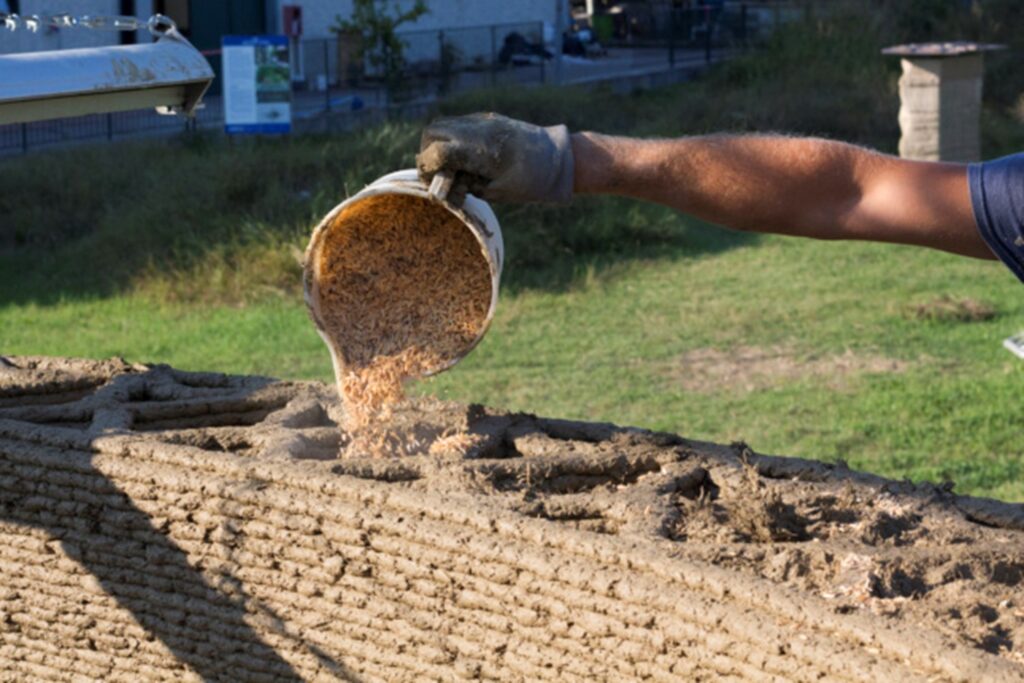
Currently, development of a 3D-printed earthen wall with embedded floor and staircase systems is underway with the aim to reduce construction time via the use of multiple printers working in tandem with each other.
In construction, much of the information needed to make this technology work comes from the design process, the computer-aided manufacturing process, and Building Information Modelling (BIM).
3D printing brings great benefits to the construction industry, being a solution that touches almost all areas of the value chain of the sector. From contributions to sustainability, increased productivity, and support in challenges on the supply chain, this technology came to revolutionize the way we build.
3D printing allows the precise amount of material to be used to lift a structure, allowing up to 60% less waste to be generated at the jobsite. Likewise, there will be no surplus in the purchase of materials, assuming a reduction in costs both in its purchase and subsequent storage.
By reducing time and costs, companies will see an exponential increase in the benefits of this technology, which is also of great help in locations where there is a need for projects and a shortage of labour or other resource. By automating the creation of a structure through 3D printers, companies will see a reduction in labour costs.

